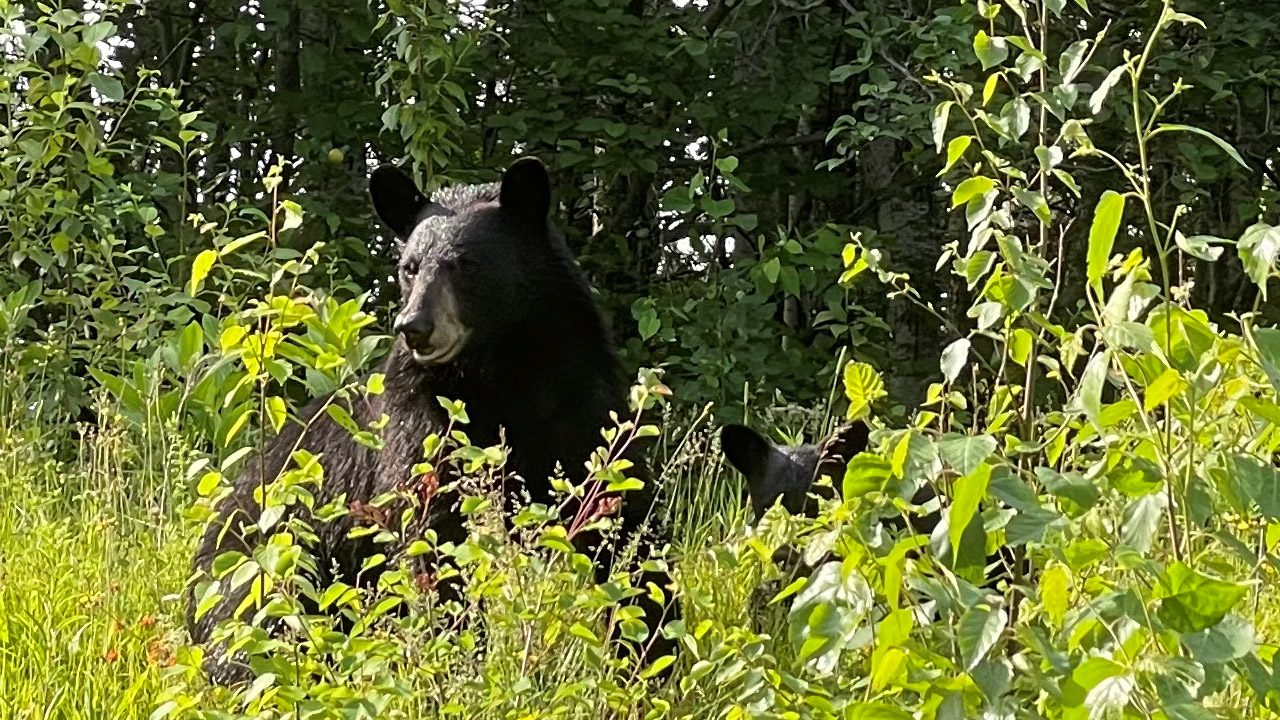A rebound for 2024 bear season in Wisconsin

(WDIO, File)
The fall bear hunting season in Wisconsin was a success with most management zones meeting or exceeding harvest expectations. On Tuesday, the Wisconsin Department of Natural Resources (DNR) announced preliminary results for the 2024 bear season. According to their findings, bear hunters harvested 4,285 bears during the five-week season. That number is a rebound from the low numbers of the 2023 fall hunt. In 2023, hunters harvested 2,922 bears.
“Several factors likely led to this season’s increase in harvest,” Randy Johnson, DNR large carnivore specialist said in a news release from the Wisconsin DNR. “In 2023, we saw an incredible amount of acorns and other natural food production. This reduced the effectiveness of baits and translated to a historically low harvest. This year, anecdotes from bear hunters and harvest data suggest less natural food availability than last year. Additionally, last year’s low harvest, coupled with bears entering dens in excellent body condition last fall, likely contributed to an increase in the number of bears on the landscape this fall.”
Wisconsin has a thriving bear population, estimated at around 23,000 bears, with a range covering more than half the state. The DNR reminds the public that bears can conflict with human interests, such as damaging agricultural crops or raiding residential trash and bird feeders. Hunters also provide valuable information about every bear taken, which helps monitor population and make sure it stays healthy and sustainable.
“Regulated bear harvest is the primary tool we use to manage bear populations and ensure bear numbers remain balanced with their habitat and public preferences,” said Johnson. “It also provides wonderful opportunities to experience nature with the company of family and friends and source sustainable protein.”
The 2024 bear season ran from September 4 to October 8 with a total of 11,501 bear hunting licenses being awarded through the license lottery system.
“On average, we expect to see about half of the total bear harvest within the first five days of the season,” Johnson said. “This year, nearly 57% of the total harvest occurred in those first five days, with over 1,000 bears taken on opening day alone. Although the harvest rate returned closer to average during the rest of the season, this strong first week set the stage to meet or exceed harvest targets by season’s end.”
If you wish to try bear hunting next season, you must apply for a license or preference point in Go Wild before the Dec. 10 deadline. State law requires bear permit applicants to apply at least once during any period of three consecutive years to retain their accumulated preference points; otherwise, all accumulated preference points will be lost. To help hunters make hunting plans, a full breakdown of the 2024 bear license drawing results and license wait times is available online. Visit the DNR’s Bear Hunting webpage to learn more about black bear hunting, ecology and management in Wisconsin.
Zone-specific preliminary registration information is as follows:
| ZONE | HARVEST TARGET | PRELIMINARY HARVEST | LICENSES ISSUED | HUNTER SUCCESS RATE |
| A | 1,075 | 1,237 | 1,731 | 71.5% |
| B | 850 | 898 | 1,515 | 59.3% |
| C | 600 | 796 | 3,000 | 26.5% |
| D | 1,100 | 1,177 | 3,005 | 39.2% |
| E | 175 | 145 | 1,750 | 8.3% |
| F | 50 | 32 | 500 | 6.4% |
| STATEWIDE TOTAL | 3,850 | 4,285 | 11,501 | 37.3% |
DNR officials say harvest targets are set to manage the bear population in Wisconsin and are readjusted each year to increase, decrease or stabilize population trends. This means that even when harvest targets are exceeded in a given year, there is little long-term biological risk to bear populations. Population and harvest data are evaluated annually and can be adjusted to meet long-term population management objectives.